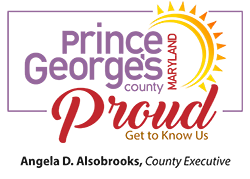
FAQs
What is human trafficking?
Human trafficking is modern-day slavery and involves the use of force, fraud, or coercion to obtain some type of labor or commercial sex act.
Force- can include physical and/or sexual assault, physical confinement, starvation, torture, and abuse.
Fraud- can include false and deceptive offers--for example, employment and wages, love, education, working conditions, and debt agreements.
Coercion- can include threats of serious harm to the victim or person victim is close to (immediate family or children), psychological manipulation, document confiscation, and instilling shame and fear
*Force, fraud, or coercion are not required for a minor to be trafficked.
Are there different types of human trafficking?
Human trafficking falls into two categories.
Sex Trafficking- The use of violence, threats, lies, debt bondage, and other forms of coercion to compel adults and children to engage in commercial sex acts (sex for money) against their will.
Forced Labor- Occurs when people are forced to work by another person through the use of violence, intimidation, or other actions. A trafficker may also take the victim’s identity papers or legal documentation and threaten to report the victim to immigration authorities.
Isn’t sex trafficking and prostitution the same thing?
No. The difference is free will. Victims of sex trafficking are being forced against their will or tricked by another person to perform sex for money. Prostitutes and sex workers may voluntarily perform sex acts for money. They are not coerced or tricked into staying in the business.
Does human trafficking involve physically moving people from place to place?
Human trafficking is often confused with human smuggling, which is the illegal movement of people across borders. Human trafficking does not necessarily involve the movement of people.
How big of a problem is human trafficking?
Human trafficking is the second largest and fastest growing criminal industry in the world. It’s estimated that human trafficking generates $32 billion in profits internationally each year.
Where does human trafficking happen?
Human trafficking is happening all over the world—worldwide, it’s estimated that 10-30 million people live in slavery every day.
In the US, 15,000-17,000 victims are trafficked into the country each year, and more than 4,500 are trafficked within our country’s borders.
It’s important to know that these numbers are underestimated, because hundreds of thousands of human trafficking cases go unreported.
Is human trafficking happening in my community?
Yes. Prince George’s County is not immune to human trafficking.
Maryland and Prince George’s County are human trafficking hot spots because of proximity to DC and Virginia and access to major transportation routes (I-95 and Route 1). There are also many truck stops and rest stops, bus depots, train stations, and airports where victims are trafficked. The area also offers many conventions, events, and tourist attractions, which increase the demand for trafficking victims.
Who are the victims of human trafficking?
ANYONE can be a victim of human trafficking, regardless of nationality, age, sex, gender orientation, or socioeconomic status.
Where do human trafficking crimes take place?
Human trafficking is a crime that is hidden in plain sight. It can happen anywhere. For example, sex trafficking may occur in hotels, motels, residential brothels, private homes, truck stops, massage parlors, and even on the street. Labor trafficking happens in hotels, motels, restaurants, casinos, hair and nail salons, private homes, construction sites, and factories.
How do traffickers recruit victims?
In nearly 50% of all cases, victims are recruited by someone they know. It might be a friend, family member, teacher, coach, boyfriend or girlfriend, or employer.
Traffickers recruit victims anywhere and everywhere—in malls, in transit hubs, in homeless shelters, even at schools. They especially rely on the internet and social media to lure victims.
Traffickers promise their victims a better life by tempting or misleading them with false promises of a job, financial security, love and affection, a place to live, better social status, or protection of some kind.
Why don’t victims leave their traffickers?
Traffickers control their victims and keep them from escaping. They may do this through physical abuse, threats to the victims or their families, debt bondage, confinement, confiscating legal or identity documents, and/or psychologically manipulating them into thinking that they can’t leave.
Victims may not understand what trafficking is or know that it’s illegal.
Traffickers may have convinced their victims that they can’t make it on their own, or that people who could help them—such as law enforcement—should be feared.
Victims also may develop strong emotional and psychological bonds to their traffickers as a result of physical and emotional abuse.
What should I do if I suspect a trafficking situation?
Learn to recognize the signs of human trafficking.
Be empathetic to victims. Show compassion, as they are victims of a serious crime.
If you are in the United States and believe you or someone else may be a victim of human trafficking, report your suspicions to law enforcement by calling 911.
If you suspect a human trafficking situation, do not personally intervene. Contact law enforcement.
How can I help end human trafficking?
There are many ways to get involved in the fight to end human trafficking, including volunteering at organizations that help survivors, helping to educate others in your community, school, or workplace about human trafficking, and working with legislators to strengthen anti-human trafficking laws.
